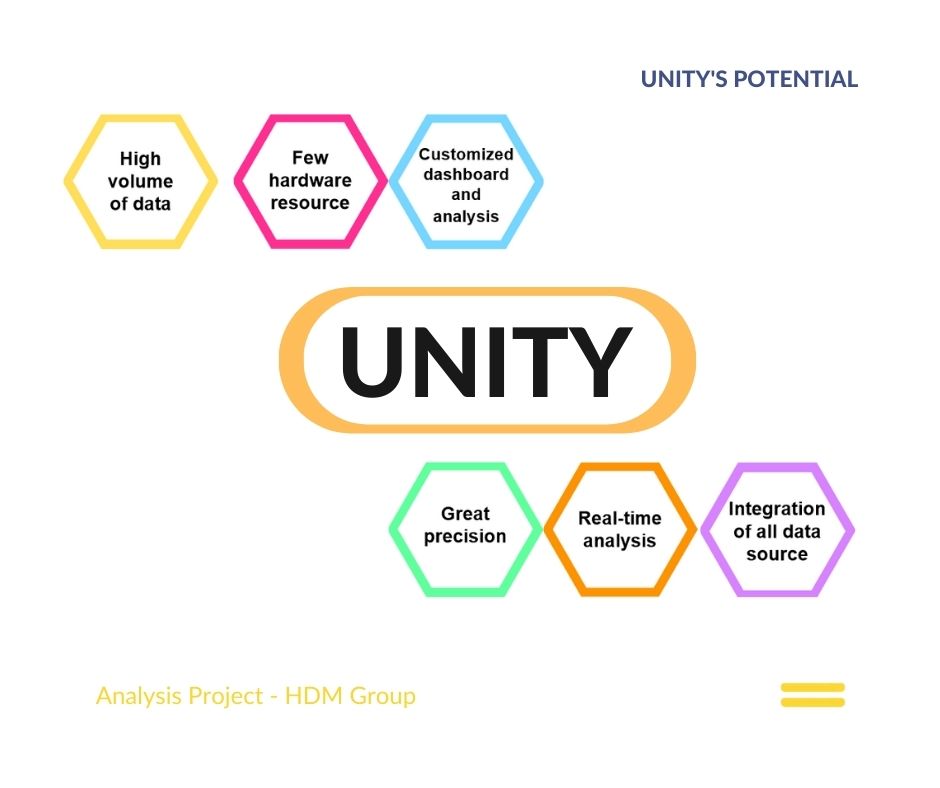
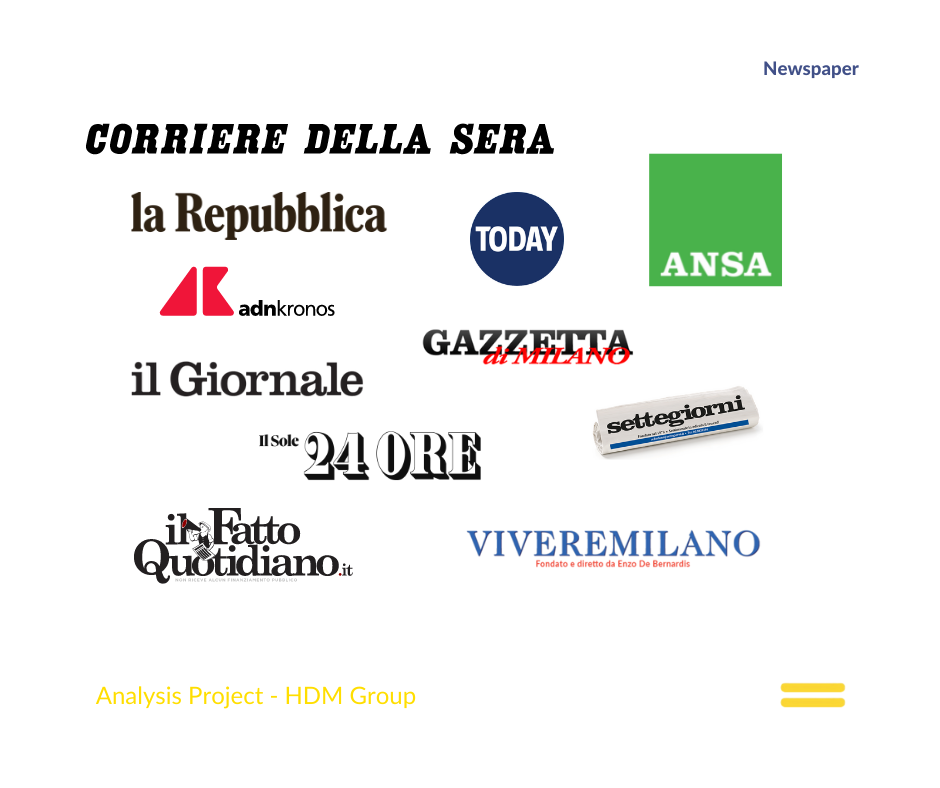
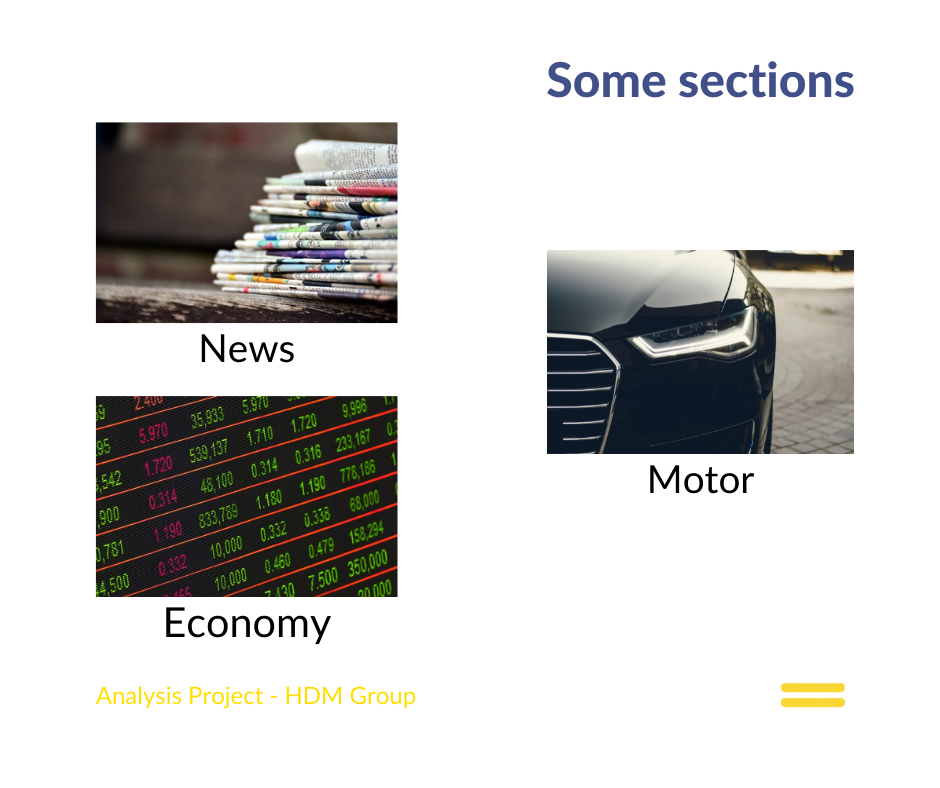
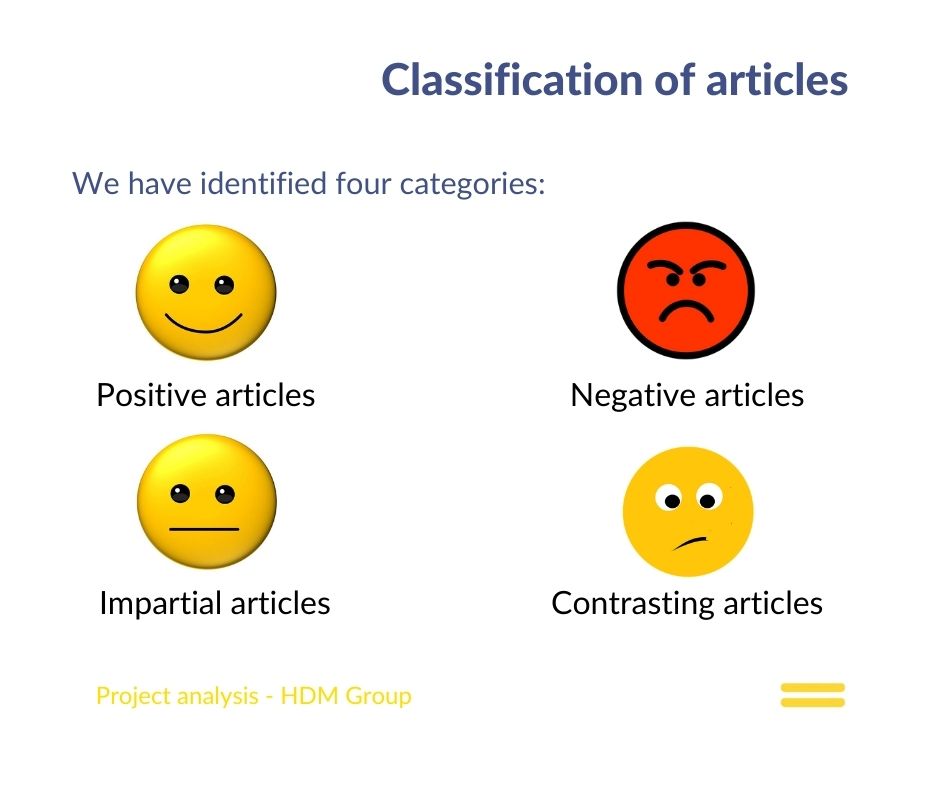
This article, which will be followed by others over the next few weeks, aims to show the potential of Unity software.
But what is Unity software?
Unity is a software we have developed concerning data collection and analysis, which connects various types of analytical tools together.
How does the Unity software work?
It allows users to carry out statistical studies and surveys of various kinds, as it is based on a very large sample of articles, which have been published in various Italian digital newspapers.
What is our research about?
As mentioned above, in order to highlight the potential of our system, we have personally conducted research based exclusively on the articles collected within Unity; more precisely, this research has focused on the various types of bonuses that have been launched by the competent authorities to deal with the Covid emergency, and aims to highlight how these bonuses have been taken into account by the various online newspapers

To find out the results of our research continue to check our social media, and for more information about Unity click here.
Today we begin to analyse the results of the research we carried out on the bonuses granted in the 2020 by the authorities to cope with the Covid-19 crisis, and conducted thanks to the capabilities of our Unity software; to understand what we are talking about click here.
As already mentioned in the last post, we have concentrated on a sample of 9701 digital articles from various newspapers to conduct this research, of which we have identified 67 on the subject of our research.
It should be pointed out that we considered not only bonuses granted at national level by the government, but also bonuses granted at local level, such as by regions or municipalities, and bonuses granted by private companies to their workers, always with the aim of countering the devastating effects of the Covid-19 crisis.
The articles we analysed come from 15 different online newspapers; of these, five are national newspapers, eight are local newspapers and two are news agencies, namely Ansa and Adnkronos.
In the following table we report the subdivision of the articles analysed by us in the respective newspapers: we can notice that the most present newspaper is Il Corriere della Sera, to which about one third of the analysed articles belong; also to be highlighted is the press agency Ansa, to which instead 9 of the 67 analysed articles belong.

Another very important statistical aspect, on which our research focused, concerns the length of the articles we analysed; more precisely, we took into consideration three different categories: articles with less than 2000 characters, articles with 2000-4000 characters and finally articles with more than 4000 characters, including spaces.

The results are shown in the following graph and demonstrate that 39% of the articles have a length between 2000 and 4000 characters, 31% of the articles have more than 4000 characters and can therefore be considered long articles and 30% of the articles have a length of less than 2000 characters and can therefore be considered short.
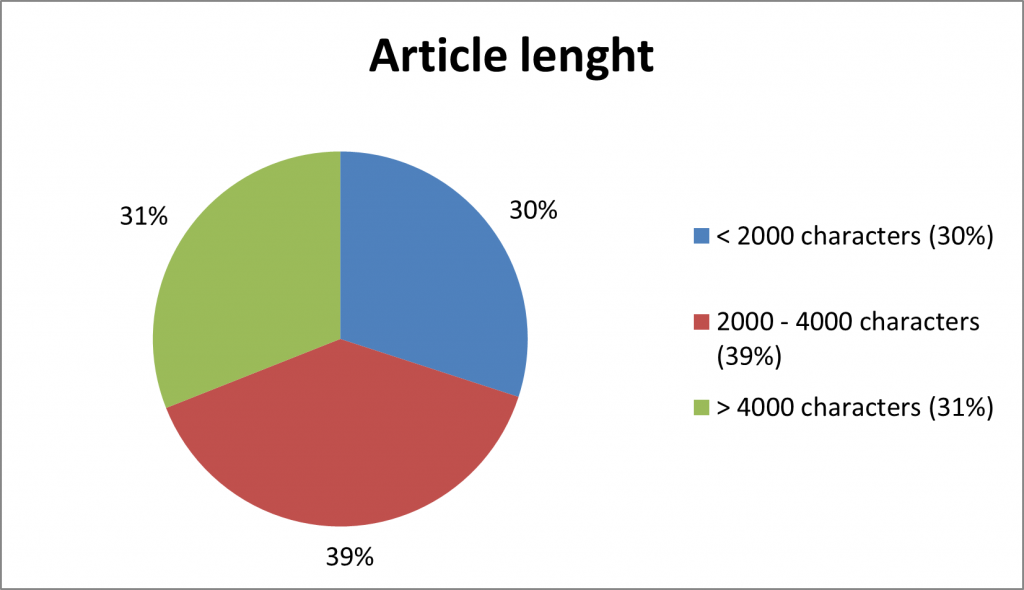
In conclusion, we can say that the sample of digital articles showed rather homogeneous results both from the point of view of the length of these articles and of the newspapers analysed during this survey. In the next section we will focus mainly on the types of bonuses that were taken into account within the articles on which our research was based.
Today we continue to analyse the results obtained from the survey we carried out thanks to our Unity software and concerning the bonuses granted to cope with the Covid emergency; as anticipated in the last intervention today we will highlight the various bonuses we encountered in the course of our analysis.
As already mentioned, in the course of this research we have not only focused on bonuses directly launched by the government, but we have also taken into account bonuses launched by local authorities and private individuals, but always with the aim of countering, in a different way, the devastating effects of the Covid-19 crisis. By analysing the digital articles collected using our Unity software, we have classified these bonuses into a few main groups which are set out below.
Looking at this graph, we can see that the most substantial category is that of “Other bonuses”, made up of 24 articles or 36% of the total, within which we have grouped bonuses granted at local level and by private companies, among which we find above all reductions on rents and special bonuses granted to health personnel involved in the front line in this emergency. Next we find the “Superbonus” launched by the Government through the “Decreto Relaunch”, and the “Ecobonus” that we have considered together with other bonuses related to mobility such as the “Bicycle Bonus”, to both of these bonuses there are 18 articles, amounting to 27%; finally, there are two other bonuses launched by the Executive, namely the “Bonus Vacanze” with 5 articles representing 7% and “Bonus Babysitter” with two articles representing 3% of the total.
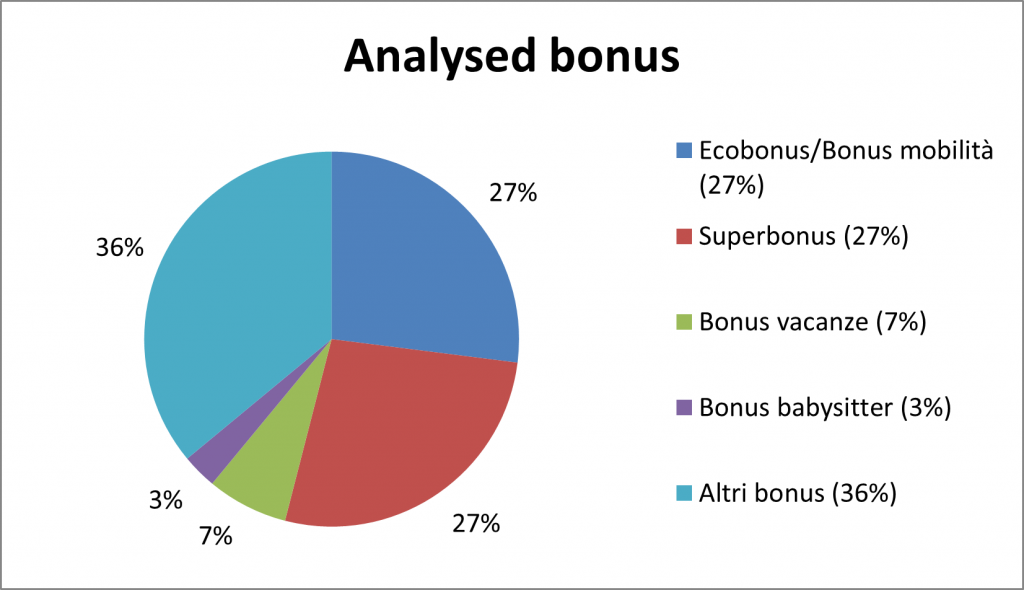
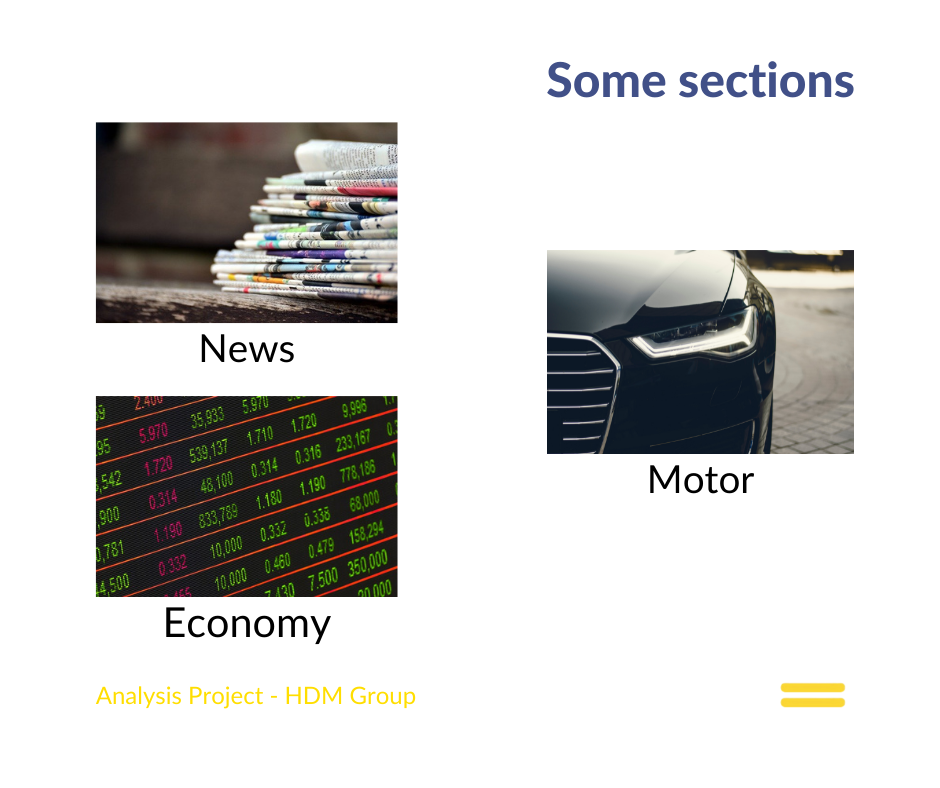
A final aspect of our research that we would like to propose today concerns the categories to which the articles we have analysed belong and which are contained in our Unity software. In this case, the largest category is “News” with 25 articles (37% of the total), followed by the “Economy” section with 17 articles (25%), and the “Motors” section with 13 articles (19%), reflecting the considerable space devoted in digital newspapers to the Ecobonus and all the mobility bonuses introduced by the government. Next we find the “Leisure/Sports/Travel” section with 7 articles (11%), the “Politics” section with 4 articles (6%) and finally the “Education” section with just one article (2%).
Appointment to the next and last intervention in which we will focus on the way the bonuses we talked about today were presented by the digital newspapers we analysed in the course of our survey.
With this last intervention, we conclude the research conducted with our Unity software on a sample of online newspaper articles, and which focused on the bonuses granted in the context of the Covid-19 crisis.
As mentioned in the last article, we will focus today on the content of the digital articles we have analysed, and more precisely on the way in which the bonuses granted by the authorities are considered by digital newspapers.
Before reporting the results we have recorded, we must point out that we have classified the articles into four different categories according to the tone in which the bonuses are presented to the readers: in the first category we have considered the “positive” articles, i.e. articles in which the bonus in question is considered as a necessary breakthrough in the fight against Covid-19, in the second category we have considered the “negative” articles, i.e. articles in which some difficulties associated with the bonus in question are pointed out, such as its insufficiency in combating the current crisis or the complexity of the bureaucratic processes in applying for it, in the third category we find the “neutral” articles, i.e. articles that merely describe the basic characteristics of a bonus without expressing a real judgement about it; finally, the fourth category is made up of “contrasting” articles, i.e. articles in which the bonus in question is considered a first step in tackling the crisis but at the same time is considered insufficient.
In the table below, we analyse the results of our Unity software in this respect:


Looking at this table, we can see that the prevailing category is made up of the articles we defined as neutral; likewise, we can see that the category of positive articles and the category of negative articles have a very similar value, which means that these bonuses constitute a significant intervention in combating the health and economic crisis, but at the same time there are various difficulties in their use. Finally, we find the category of contrasting articles.
This last article concludes the presentation of the results of this research carried out using the resources of our Unity software. For further information on this software click here. If you have missed the previous articles on our research, or other research carried out by us using Unity, click here.
| Cookie | Duration | Description |
|---|---|---|
| __cfduid | 1 month | The cookie is used by cdn services like CloudFare to identify individual clients behind a shared IP address and apply security settings on a per-client basis. It does not correspond to any user ID in the web application and does not store any personally identifiable information. |
| _GRECAPTCHA | 5 months 27 days | This cookie is set by the Google recaptcha service to identify bots to protect the website against malicious spam attacks. |
| cookielawinfo-checbox-analytics | 11 months | This cookie is set by GDPR Cookie Consent plugin. The cookie is used to store the user consent for the cookies in the category "Analytics". |
| cookielawinfo-checbox-functional | 11 months | The cookie is set by GDPR cookie consent to record the user consent for the cookies in the category "Functional". |
| cookielawinfo-checbox-others | 11 months | This cookie is set by GDPR Cookie Consent plugin. The cookie is used to store the user consent for the cookies in the category "Other. |
| cookielawinfo-checkbox-advertisement | 1 year | The cookie is set by GDPR cookie consent to record the user consent for the cookies in the category "Advertisement". |
| cookielawinfo-checkbox-necessary | 11 months | This cookie is set by GDPR Cookie Consent plugin. The cookies is used to store the user consent for the cookies in the category "Necessary". |
| cookielawinfo-checkbox-performance | 11 months | This cookie is set by GDPR Cookie Consent plugin. The cookie is used to store the user consent for the cookies in the category "Performance". |
| CookieLawInfoConsent | 1 year | Records the default button state of the corresponding category & the status of CCPA. It works only in coordination with the primary cookie. |
| viewed_cookie_policy | 11 months | The cookie is set by the GDPR Cookie Consent plugin and is used to store whether or not user has consented to the use of cookies. It does not store any personal data. |
| Cookie | Duration | Description |
|---|---|---|
| pll_language | 1 year | This cookie is set by Polylang plugin for WordPress powered websites. The cookie stores the language code of the last browsed page. |
| Cookie | Duration | Description |
|---|---|---|
| YSC | session | This cookies is set by Youtube and is used to track the views of embedded videos. |
| Cookie | Duration | Description |
|---|---|---|
| IDE | 1 year 24 days | Used by Google DoubleClick and stores information about how the user uses the website and any other advertisement before visiting the website. This is used to present users with ads that are relevant to them according to the user profile. |
| test_cookie | 15 minutes | This cookie is set by doubleclick.net. The purpose of the cookie is to determine if the user's browser supports cookies. |
| VISITOR_INFO1_LIVE | 5 months 27 days | This cookie is set by Youtube. Used to track the information of the embedded YouTube videos on a website. |
| yt-remote-connected-devices | never | YouTube sets this cookie to store the video preferences of the user using embedded YouTube video. |
| yt-remote-device-id | never | YouTube sets this cookie to store the video preferences of the user using embedded YouTube video. |
| yt.innertube::nextId | never | This cookie, set by YouTube, registers a unique ID to store data on what videos from YouTube the user has seen. |
| yt.innertube::requests | never | This cookie, set by YouTube, registers a unique ID to store data on what videos from YouTube the user has seen. |
| Cookie | Duration | Description |
|---|---|---|
| CONSENT | 16 years 8 months 3 days 15 hours 17 minutes | No description |
| DEVICE_INFO | 5 months 27 days | No description |